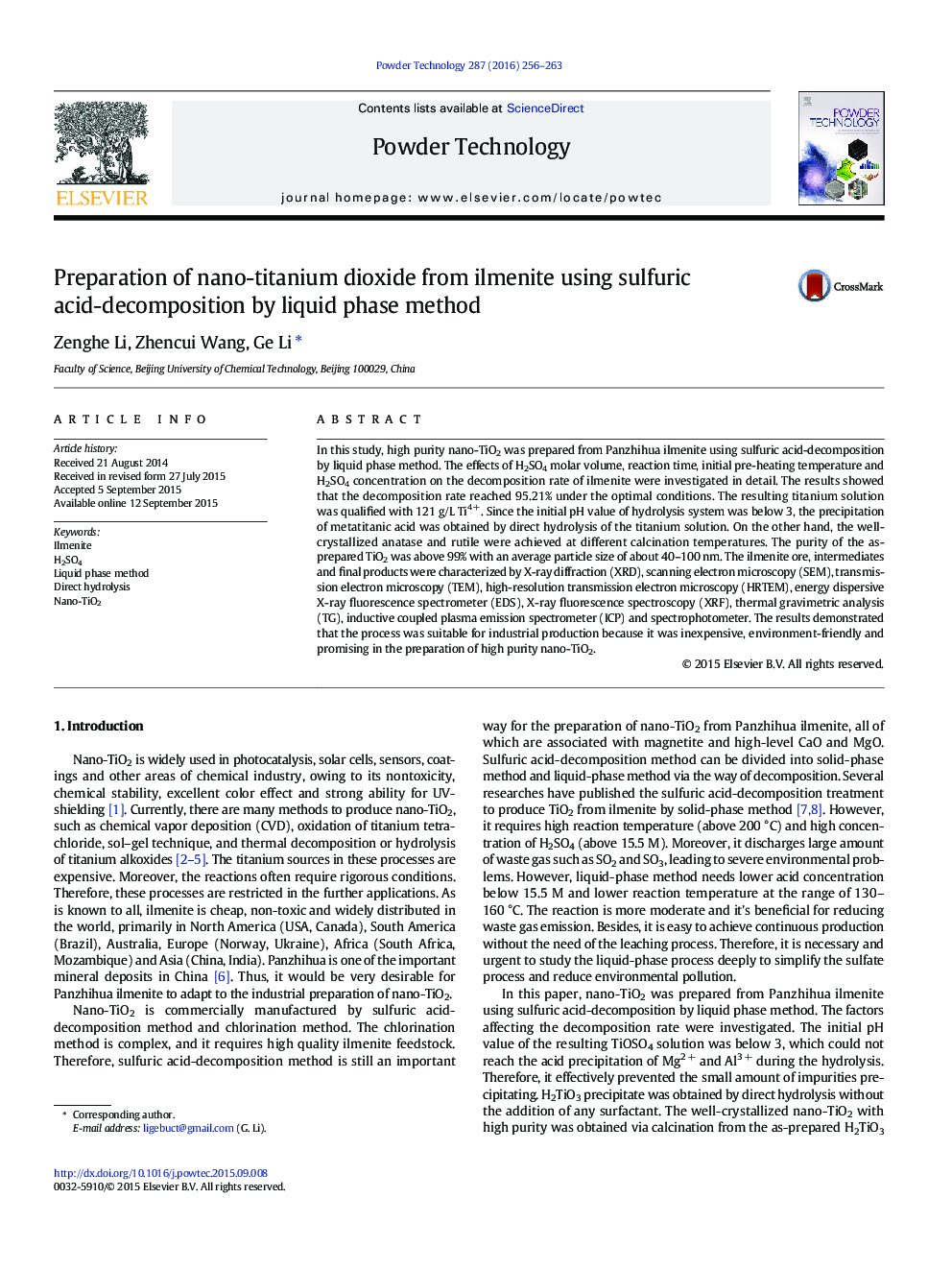| کد مقاله | کد نشریه | سال انتشار | مقاله انگلیسی | نسخه تمام متن |
|---|---|---|---|---|
| 235176 | 465630 | 2016 | 8 صفحه PDF | دانلود رایگان |
• TiOSO4 solution was obtained using sulfuric acid-decomposition by liquid phase method.
• The factors affecting the decomposition of ilmenite were investigated.
• H2TiO3 precipitate with high purity was obtained by direct hydrolysis.
• Well-crystallized anatase, anatase–rutile mixture and rutile were obtained.
In this study, high purity nano-TiO2 was prepared from Panzhihua ilmenite using sulfuric acid-decomposition by liquid phase method. The effects of H2SO4 molar volume, reaction time, initial pre-heating temperature and H2SO4 concentration on the decomposition rate of ilmenite were investigated in detail. The results showed that the decomposition rate reached 95.21% under the optimal conditions. The resulting titanium solution was qualified with 121 g/L Ti4 +. Since the initial pH value of hydrolysis system was below 3, the precipitation of metatitanic acid was obtained by direct hydrolysis of the titanium solution. On the other hand, the well-crystallized anatase and rutile were achieved at different calcination temperatures. The purity of the as-prepared TiO2 was above 99% with an average particle size of about 40–100 nm. The ilmenite ore, intermediates and final products were characterized by X-ray diffraction (XRD), scanning electron microscopy (SEM), transmission electron microscopy (TEM), high-resolution transmission electron microscopy (HRTEM), energy dispersive X-ray fluorescence spectrometer (EDS), X-ray fluorescence spectroscopy (XRF), thermal gravimetric analysis (TG), inductive coupled plasma emission spectrometer (ICP) and spectrophotometer. The results demonstrated that the process was suitable for industrial production because it was inexpensive, environment-friendly and promising in the preparation of high purity nano-TiO2.
Figure optionsDownload as PowerPoint slide
Journal: Powder Technology - Volume 287, January 2016, Pages 256–263
